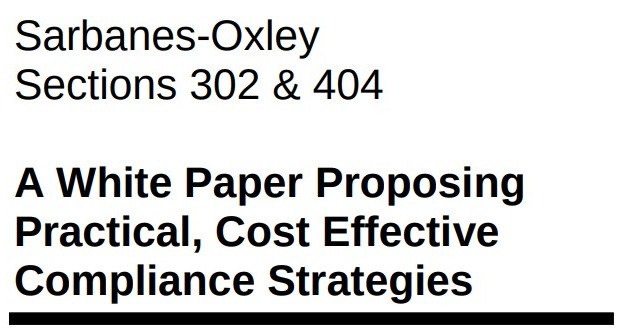
Sarbanes-Oxley Patent Compliance – Checklist
Sarbanes-Oxley Compliance Checklist for Patent Reporting
Use this to prepare for executive certification (SOX 302) and to support internal controls assessments (SOX 404).
🔍 1. Patent Asset Verification
-
Maintain a centralized, up-to-date inventory of all reported patents (issued and pending).
-
Confirm each listed patent is active and not expired, with maintenance fees paid.
-
Ensure each patent is properly assigned to the reporting entity (with full title history).
-
Flag patents under USPTO reexamination, IPR, or opposition proceedings.
-
Review jurisdictional coverage (domestic vs. international filings) for reported portfolios.
🧾 2. Financial Statement Alignment
-
Reconcile the patent inventory with the balance sheet’s intangible assets line item.
-
Ensure reported patent values are backed by supportable valuation methods.
-
Link licensing or royalty revenue directly to confirmed, enforceable patents.
-
Adjust valuation assumptions when patents are invalidated, challenged, or expire.
-
Ensure impairment testing procedures include legal status checks.
🛡 3. Risk Factor and MD&A Disclosures
-
Identify patents that are critical to current or future revenue.
-
Disclose known risks to enforceability (e.g., litigation, regulatory challenges).
-
Clearly explain expiration timelines for foundational patents.
-
Avoid generic statements about “strong IP portfolios” without specifics.
-
Update forward-looking statements to reflect IP-related uncertainty.
🔐 4. Internal Control Procedures (SOX 404)
-
Include patent data in your ICFR documentation and risk assessment matrix.
-
Assign responsibility for IP reporting to named individuals or departments.
-
Require quarterly certifications or attestation from internal IP counsel or asset managers.
-
Integrate IP audits into external audit prep and compliance testing cycles.
-
Maintain audit trails for any changes to reported patent lists or valuations.
✍️ 5. Executive Certification Support (SOX 302)
-
Ensure CEOs/CFOs receive pre-certification briefings that include patent asset updates.
-
Provide a summary of IP-related risks, changes, and control effectiveness to executive officers prior to signing 10-K or 10-Q.
-
Document the basis for certifying accuracy of patent-related disclosures in public filings.
-
Disclose to audit committee any known control weaknesses or inaccuracies involving IP assets.
-
Maintain a record of internal sign-offs from legal, accounting, and business units on patent data.
📌 Final Tip: Test Your Controls Annually
Consider conducting a mock SOX review focused solely on IP-related reporting. Simulate scenarios such as:
-
Expired patent mistakenly reported as active
-
Licensing revenue attributed to an invalidated patent
-
Patent litigation omitted from risk disclosures
This kind of scenario testing can expose hidden vulnerabilities before they trigger a certification or filing failure.
news via inbox
Nulla turp dis cursus. Integer liberos euismod pretium faucibua
